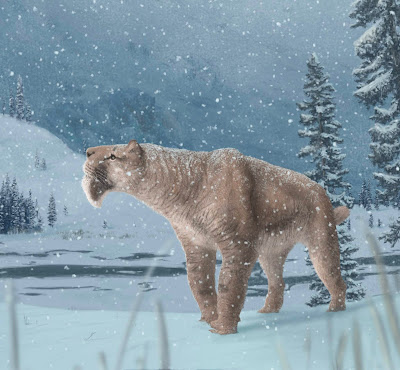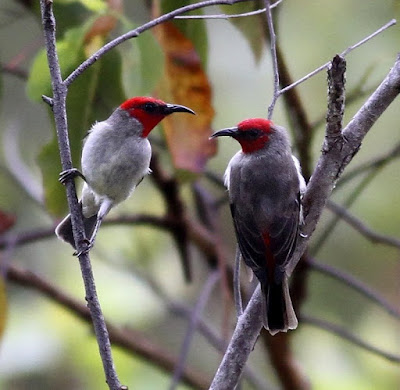[Most Recent Entries] [Calendar View]
Saturday, October 5th, 2019
| Time | Event | ||
| 8:36a | [PaleoMammalogy • 2019] Late Pleistocene Records of Felids from Medicine Hat, Alberta, Including the First Canadian Record of the Sabre-toothed Cat Smilodon fatalis
ABSTRACT In the late 1960s, a team led by C.S. Churcher and A. MacS. Stalker collected over 1000 vertebrate fossils, mostly representing large herbivorous mammals, from bluffs along the South Saskatchewan River near Medicine Hat, Alberta, Canada. The records from this area also include the only documented case of the sabre-toothed cat Smilodon fatalis, but these specimens have not been described or illustrated, and therefore, their identification has never been verified. Here, all felid fossils recovered from the Medicine Hat bluffs are described and identified. We confirm the presence of the machairodontine S. fatalis and three additional taxa: the feline Lynx and the pantherines Panthera cf. P. atrox (American lion) and Panthera cf. P. spelaea (cave lion). Notably, this record of S. fatalis is its first confirmed occurrence in Canada and is a significant northerly range expansion, bringing the global distribution of this species in line with what is typical for a large felid. Should the tentative record of Panthera cf. P. spelaea be correct, this would represent its first occurrence in Alberta and a southeastern range extension, bringing it into the range of P. atrox. The possible presence of both P. atrox and P. spelaea suggests that Late Pleistocene pantherine biogeography in North America may be more complex than previously believed, particularly during relatively warm interglacial periods. Keywords: Smilodon, Panthera, Lynx, sabre-toothed cat, lion, biogeography Ashley R. Reynolds, Kevin L. Seymour and David C. Evans. 2019. Late Pleistocene Records of Felids from Medicine Hat, Alberta, Including the First Canadian Record of the Sabre-toothed Cat Smilodon fatalis. Canadian Journal of Earth Sciences. 56(10); 1052-1060. DOI: 10.1139/cjes-2018-0272 | ||
| 9:43a | [Ornithology • 2019] Myzomela prawiradilagae • A New Myzomela Honeyeater (Meliphagidae) from the Highlands of Alor Island, Indonesia
Abstract We here describe a new species of Myzomela honeyeater from the Lesser Sunda island of Alor (southeast Indonesia). The new species is phylogenetically most closely related to Myzomela kuehni from the adjacent island of Wetar and most closely resembles that species in plumage. However, it differs in important morphological, bioacoustic and ecological characteristics. The discovery of a new bird species on Alor is of great biogeographic importance and elevates this island to the status of an Endemic Bird Area. The new Alor Myzomela is restricted to montane eucalypt woodland mostly above 900 m elevation and is currently known from few sites across the island. Based on its occurrence records and human population trends in the highlands of Alor Island, we recommend classification under the IUCN threat status endangered. Keywords: Myzomela, Honeyeater, Alor, Wetar, Plumage, Bioacoustics, Ecological characteristics, Novel species Myzomela prawiradilagae Mohammad Irham, Hidayat Ashari, Suparno, Colin R. Trainor, Philippe Verbelen, Meng Yue Wu and Frank E. Rheindt. 2019. A New Myzomela Honeyeater (Meliphagidae) from the Highlands of Alor Island, Indonesia. Journal of Ornithology. DOI: 10.1007/s10336-019-01722-2 |
| << Previous Day |
2019/10/05 [Calendar] |
Next Day >> |





